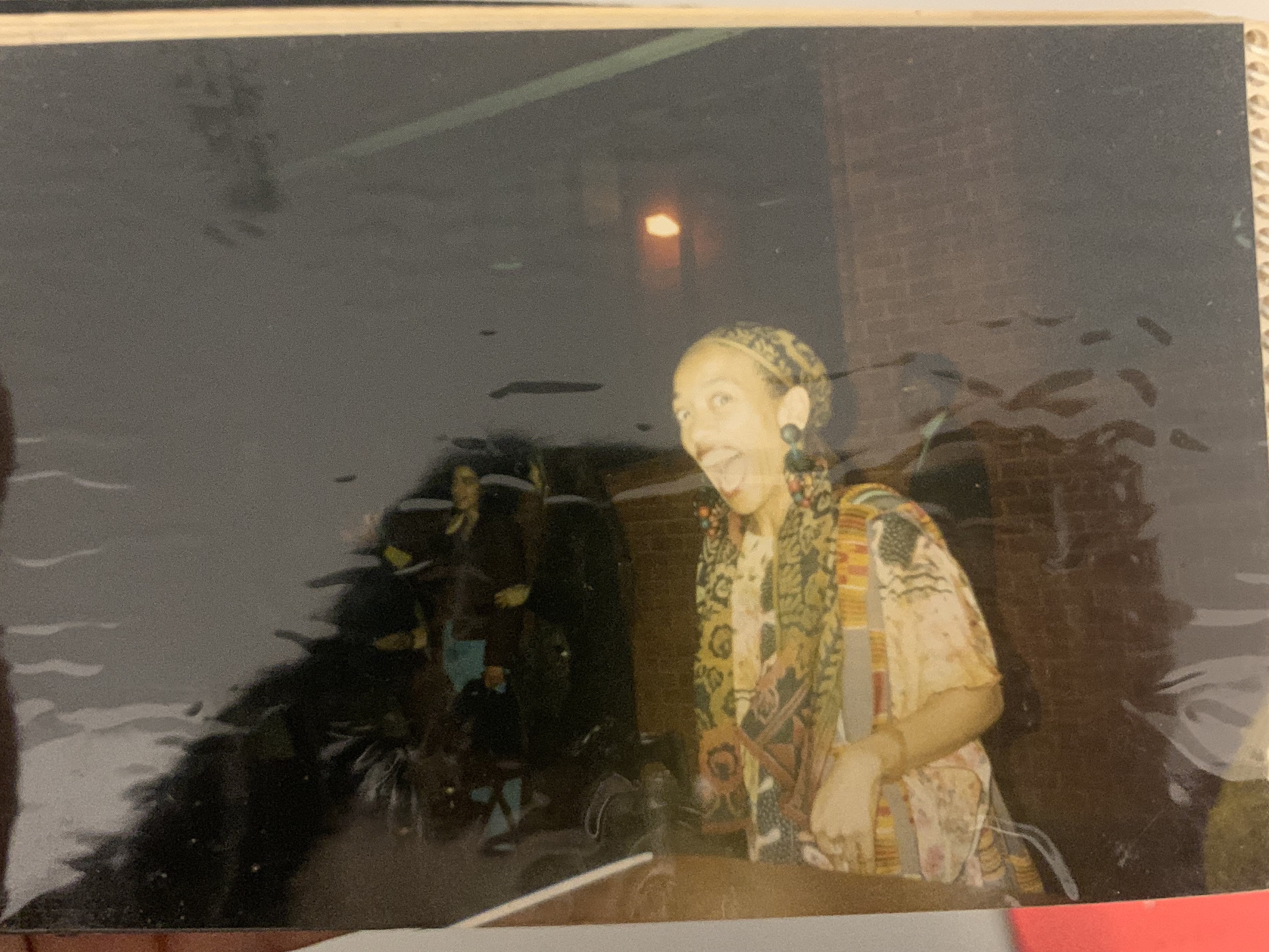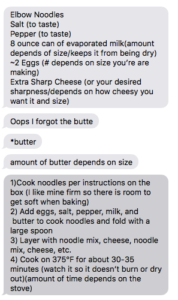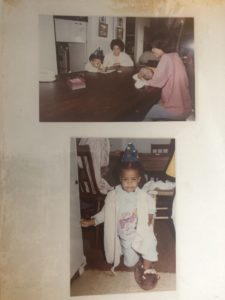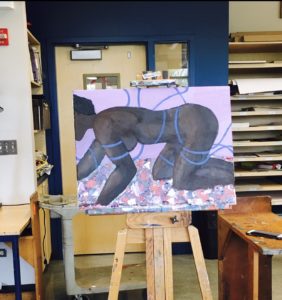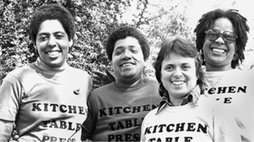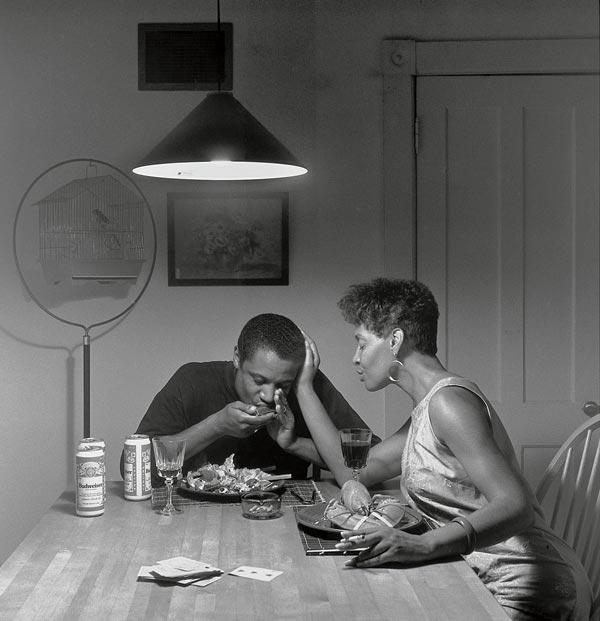I remember coming upon this photo unintentionally during our first-ever class visit to the archive. This was the first of about 20 photos that I found in an unnamed photo album. All of them were black and white, but there was something about this photo that caught my eye. It took me a while to digest the content – at first, all I saw was a woman resting on her back, with her hand on her head, almost in a sign of distress. I later was able to make out the darker figure of the doctor cradling the newborn baby in her arms. Once I understood the photo, I immediately felt a sense of shame as an intruder witnessing an intimate moment. Even though all of the photos were shot in black in white, they ranged in content from babies to people standing in front of parks and signs, to pregnant women and more.
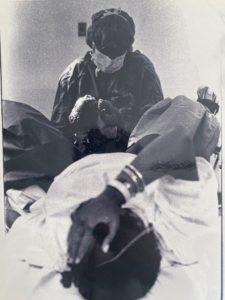
The first photo in the black photo album titled “The Sweet Breath of Life”. These photos were later published into a book that can now be purchased wherever books are sold.
Upon doing some research on google, I was able to find out that this photo album is actually a collection of photos that were later included in a published photobook titled, “The Sweet Breath of Life: A Poetic Narrative of the African American Family”. This collection of work was eventually published in 2010, including edits from Frank Stewart, photographs from Kaminige Workshop, and contributions from Ntozake Shange herself. I found it really interesting that this photo album was placed in the same box as two additional family photo albums, that included photographs from Ntozake Shange’s life. While this form of archiving might have been unintentional, I find it telling that this published album was included with two other personal photo albums. In a way, it almost signifies that Shange’s life was crucial to understanding the poetic narrative of the African-American family (I purposefully included all three photo albums together in the second photo so you could see how they overlap with each other). It also makes sense that the first photo encapsulates the idea of the sweet breath of life, being that a newborn baby is taking that sweet breath in. I noticed that all of the photos and albums were arranged in a set of “series”. In both of my visits to the archives, I noticed that Shange has a lot of photo albums in her collection, which gives me a new appreciation for all of the photo albums that I have in my home that remain untouched.
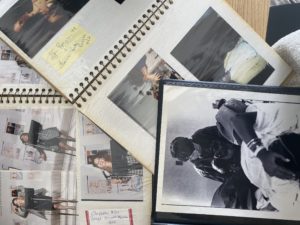
These are all three of the photoalbums included in box 50 (Identifier BC 20.29). Notice the difference in terms of the content of all three.
Although this photo is outside the scope of my scalar project, I think that the digital archives have proved to be a fantastic resource for understanding her collection. We are allowed to make photocopies and scans for research purposes only. Thanks to technology, I know that I personally accessed this collection of photo albums on October 10th at 1:34 pm. However, additional metadata information, such as when this photo album came together, or when Ntozake Shange approved of the final manuscript of the photo album is information unbeknownst to me.
Works Cited:
Ntozake Shange Papers, 1966-2016; Box and Folder; Barnard Archives and Special Collections, Barnard Library, Barnard College. http://collections.barnard.edu/public/repositories/2/resources/377 Accessed November 28, 2019.






